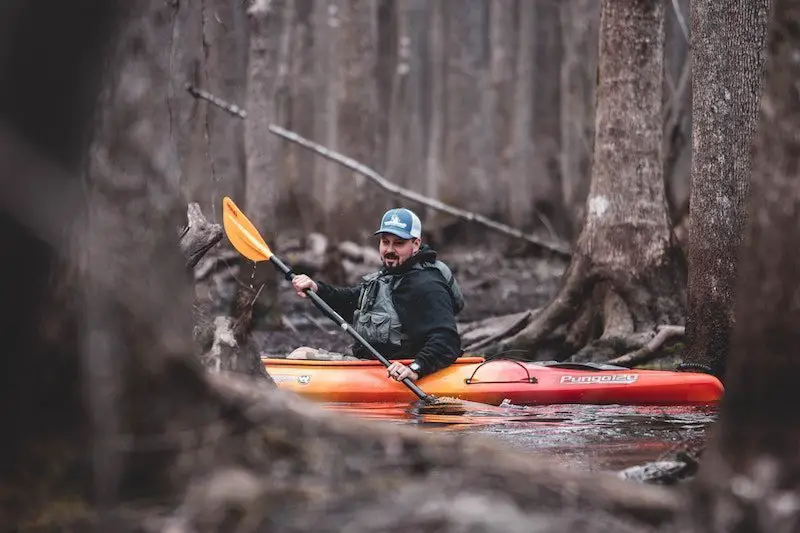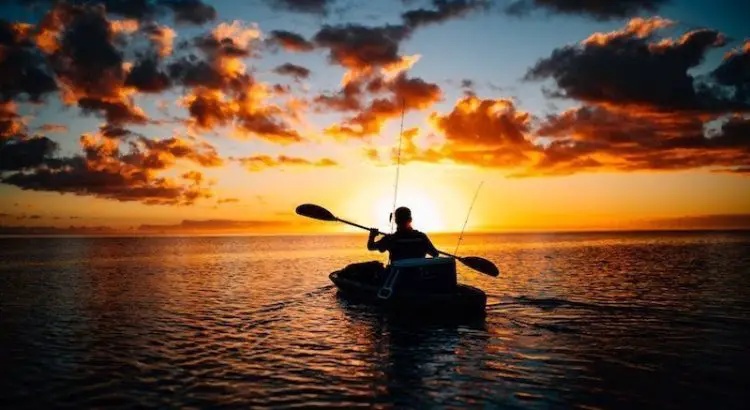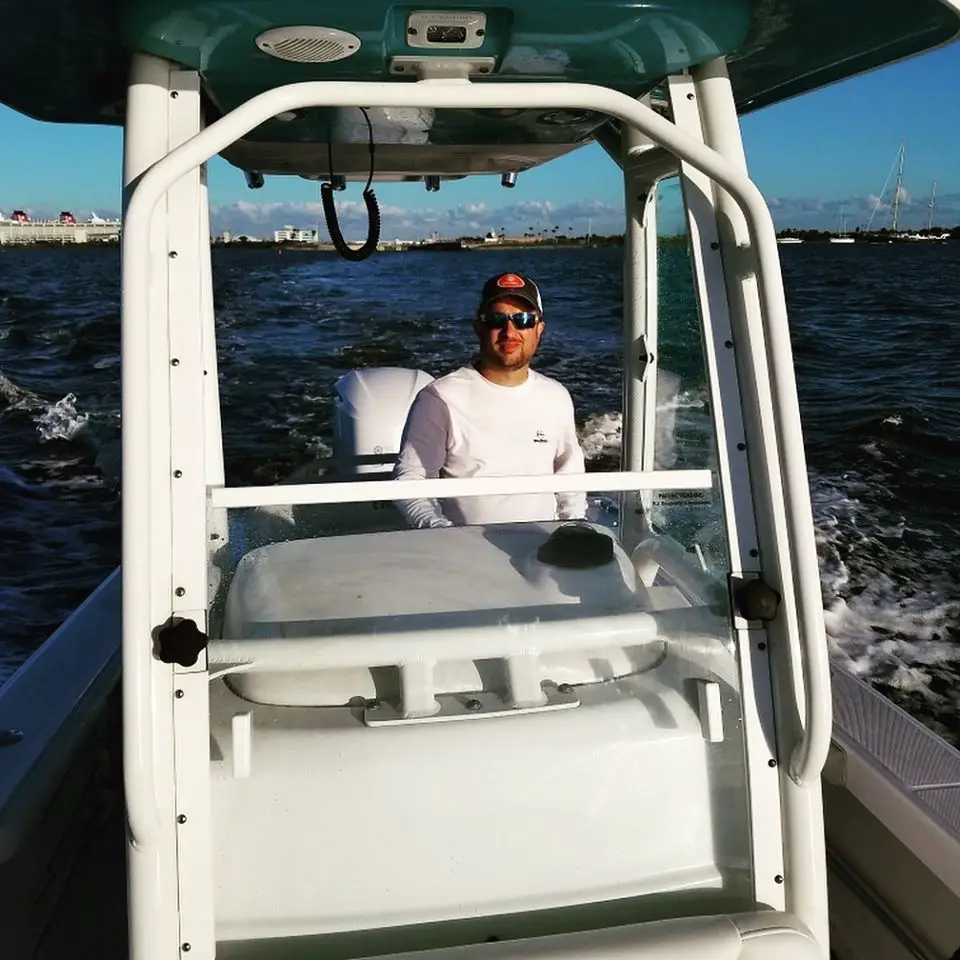This page contains affiliate links. This means that we may get a small commission for recommending products, if you choose to click on something and buy it. This does not cost you anything, but we wanted to be honest and let you know!
(Last Updated On: )Did you know you can find fishing kayaks under $1000? It’s true!
Fishing from a kayak allows you to reach areas that you may not be able to access if you were on a larger boat.
Using a kayak is also a great way to get a little exercise and sun while potentially finding the best catch of the day.
In this post, we’ll help you navigate the best sit on top fishing kayaks under $1000 on the market today.
| Sit-On-Top Kayak | Preview | Max Load Capacity |
| BKC RA220 | 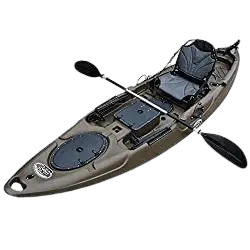 | 450 lbs |
| Vibe Kayaks Sea Ghost 110 | 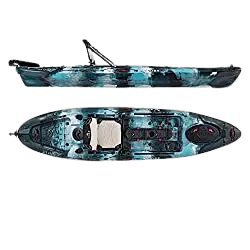 | 425 lbs |
| Pelican Sentinel 100X | 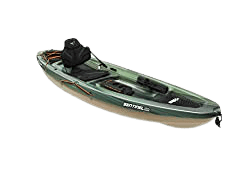 | 275 lbs |
| Lifetime Tamarack Angler | 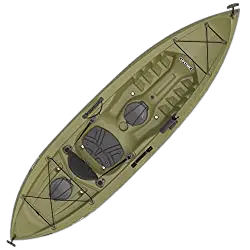 | 275 lbs |
| Pelican 10 Feet Lightweight | 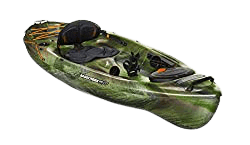 | 325 lbs |
Table of Contents
Product Reviews
1. BKC RA220 11.6′ Single Fishing Kayak
The BKC RA220 has everything you need in a kayak. This sit on top fishing kayak features four storage areas – three of them are water-tight and perfect for a wallet, phone, keys, and food.
The fourth one is an open cargo area with a bungee tie-down system for keeping larger gear secure.
It is stable enough for standing, so if you prefer to cast and reel while on your feet, go ahead and stand tall.
Pros:
- Waterproof storage
- Foot pedal operated rudder control
- Twin flush-mount rod holders
Cons:
- Compartment clasps could break easily
2. Vibe Kayaks Sea Ghost 110
The Vibe Sea Ghost series hulls focus on blending speed and stability for a perfect balance.
It is equipped with the most customizable work deck, and gear space kayak anglers demand, and the 425 pounds of hauling capacity means you can bring it all. It is stable, fast and comfortable; what more could you ask for!
Pros:
- 425-pound load capacity
- Water-tight dual hinged console with cargo bags
- Six accessories gear tracks
Cons:
- Rudder lines can come undone
3. Pelican Sentinel 100X
The Pelican Sentinel 100x angler has a flat bottom hull to ensure the stability that you will needd when you are on the water casting line and reeling in the big ones. Measuring a generous 9 feet 6 inches, the Sentinel weighs only 44 pounds, which makes it incredibly easy to transport and store.
Made using patented Ram-X materials, this kayak is made of exceptionally durable high molecular weight polyethylene. This patented material resists impacts and breakage.
The Sentinel will serve you well for many years to come. Equiped with ExoPak, this removable storage compartment that fits into the tank for handy storage.
Pros
- You can cover long distances with minimum effort
- Great for those who are looking for stability in a kayak
- Open design makes it easy loading and unloading
Cons
- Some purchasers had damage to the kayak upon arrival
4. Lifetime Tamarack 120″
The Tamarach 120 Angler kayak from Lifetime is constructed of UV-protected and high density polyethylene. The 120 inch kayak has a 275 pound weight capacity that comes in an olive green.
This sit-on-top kayak comes with a padded seat back and front and rear shocks cords.
There are two handy six-inch storage hatches in the rear and center. Two flush-mounted pole holders, a top mount rod holder give you places for your favorite rods.
The Tamarack 120 angler weighs 52 pounds and has front and rear carry handles that make it easy to transport.
Multiple footrest positions, and the padded seat back, make this kayak a pleasure to spend the day in.
Pros
- Constructed of blow-molded high-density polyethylene
- UV protected
- Front and rear carry handles
Cons
- One user had seat clamp break after two uses
5. Pelican 10 Feet Lightweight
Lightweight and easy to carry, the Sentinel 100X Angler from Pelican has two retractable carrying handles that make transporting this 50-pound sit-on-top kayak wherever you need to go.
This ten foot kayak is built on a twin-arched multi chine hull with a width of 30 inches and can handle loads of up to 300 pounds.
With the ability to track well, this compact kayak has an ERGOFORM padded backrest with a seat cushion that will provide you comfort during long hours of fishing or navigating the waters.
Molded footrests make the ride even more comfortable. Two flush mount rod holders are located just behind the seat as well as a swivel rod holder up front. The Sentinel by Pelican also has a handy dual position bottle holder in this compact, lightweight kayak
Pros
- Convenient carry handles
- 4 inch dry hatch with storage bags
- ERGOFIT G2 seating system with padded seat
Cons
- Is best mainly for beginners
- The seat quality can be improved
What to Look For When Choosing a Kayak?
There are certain factors that you should look for when deciding to purchase a kayak. These include:
Size of the Boat
The size of the boat will affect how easy it is to handle, how stable it will be on the surface of the water, and the number of paddlers it will accommodate.
Solo boats have only one seat for one passenger, while tandem boats can help two people.
Longer boats are narrower and less stable while short boats tend to be wider and offer greater stability.
Material
The material your kayak is made of is essential. Since the kayak will be exposed to harsh sunlight and different types of water, you want it to be made of something strong and durable.
A kayak made of high-density polyethylene offers superior durability and lightness that will make your kayak easier to handle.
A UV stabilized boat will also prolong the boat’s life while keeping color intact.
What Style of Kayak to Choose?
While fishing from a kayak is possible no matter the type, there are a ton of options on the market now that are designed explicitly for angling on the water.
Choosing the right kayak to meet your needs can involve a variety of criteria. This includes where you intend to primarily use the kayak, your budget, and your style preference.
Sit on Top vs. Sit-in Kayak
When choosing the best kayak, you want to consider if you would like to purchase a sit on top or a sit-in kayak. This difference makes a huge impact as to how to manage the kayak.
As the name implies, a sit on top lacks an enclosed cockpit, and the paddler is positioned on top of the kayak above the water’s surface.
This type of kayak is perfect for beginners as it allows them not to feel trapped inside the kayak in the event of a capsize.
Sit on top kayaks also have a higher center of gravity, and they are more stable than sit-in kayaks.
The downside to sitting on top kayaks is the fact that they are much slower than sit-in kayaks due to their relatively wide beam.
The paddlers’ control is also limited because the paddler cannot place their knees against the underside of the deck. Overall, sit on top kayaks require a lot more effort than sit-in kayaks.
A sit-in kayak, on the other hand, is much more traditional looking. As the name implies, a sit-in kayak is equipped with an enclosed cockpit.
The paddler sits inside the kayak below the water’s surface. This design is much more popular than that of a sit on top kayak and is used more by intermediate and advanced kayakers.
Sit-in kayaks have a lower center of gravity and high secondary stability, which allows them to turn and lean into roughs while staying upright.
They are built much narrower than sit on top kayaks, thus making them a lot faster.
Many paddlers may feel like they are trapped inside the cockpit with no escape as they sit under the water’s surface.
Sit in kayaks can also fill with water, which could intimidate paddlers.
They are a bit more unstable than sit on top kayaks, and beginners might not be comfortable navigating this type of kayak.
How to Take Good Care of Your Fishin Kayak?
For your new kayak to last you a long while, you want to take proper care of it. Here are a few tips you can try to make sure your kayak stays in good condition:
Make Sure Your Fishing Kayak Is Always Covered
It is a good idea to keep your kayak covered when not in use, especially if you are not able to store your boat inside your home, garage, or shed.
The best way to keep the inside of your kayak clean and protected from the sun is to use a cockpit cover.
Cockpit covers come in different sizes in order to fit specific cockpit dimensions for a tight seal.
This will ensure that your boat does not end up full of rain, snow, leaves, bugs, or other creatures while simultaneously protecting the seat of your kayak from sun damage.
If you do not have a cockpit cover, a well-placed tarp over your kayak is better than no protection at all.
Keep in mind, though, that without a secure seal, nature will still find its way inside.
Make Sure Your Fishing Kayak is Always Clean
After an adventurous day of kayaking, you want to be sure to rinse off your boat with clean water and a bit of bleach or vinegar. This will help to remove the salt or freshwater gunk.
The salt from seawater and the sand from the beach will eventually eat away at your boat (especially the metal pieces) if not washed quickly after docking.
If you are storing your boat under a tarp, be sure that your kayak is completely dry to prevent any growth of mold or mildew.
Keep Your Fishing Kayak Away From The Sun
Kayaking is an outdoor sport and a pastime that will allow you to enjoy a sunny summer day.
But if you leave your boat out in the sun for too long, that is not good for the overall condition of the boat.
Most kayaks these days have UV inhibitors within the hull material that will help to keep the boat protected.
However, prolonged sun exposure can make the bright, vibrant color of your boat fade and weaken the hatch covers.
The hot sun can also deform and warp plastic kayaks.
Be sure to never leave your kayak on top of your car for longer than necessary. This will help to avoid unnecessary UV damage.
Quick Tips
Here are a few more quick tips that will help in caring for your kayak:
- Be sure to inspect your kayak for any small cracks, hull damage, or signs of water leaks.
- Using clean water and mild dish soap can help you clean your kayak.
- A 600 to 800-grade sandpaper pair with a fine polish abrasive will help to eliminate minor scratches.
- Fiberglass or plastic kayak can be sprayed with UV protection at least three times a year to keep it in good condition.
- A mild automotive polish and abrasive can help get rid of stubborn stains on a kayak.
Conclusion
Kayaks come in all shapes and sizes. You want to choose something that is best for your budget and your needs.
Be sure to remember to focus on durability and lightness when choosing your kayak. If you keep these things in mind, you won’t go wrong in your choice.
For more on kayaking, check The Ultimate Guide To Kayaking.
